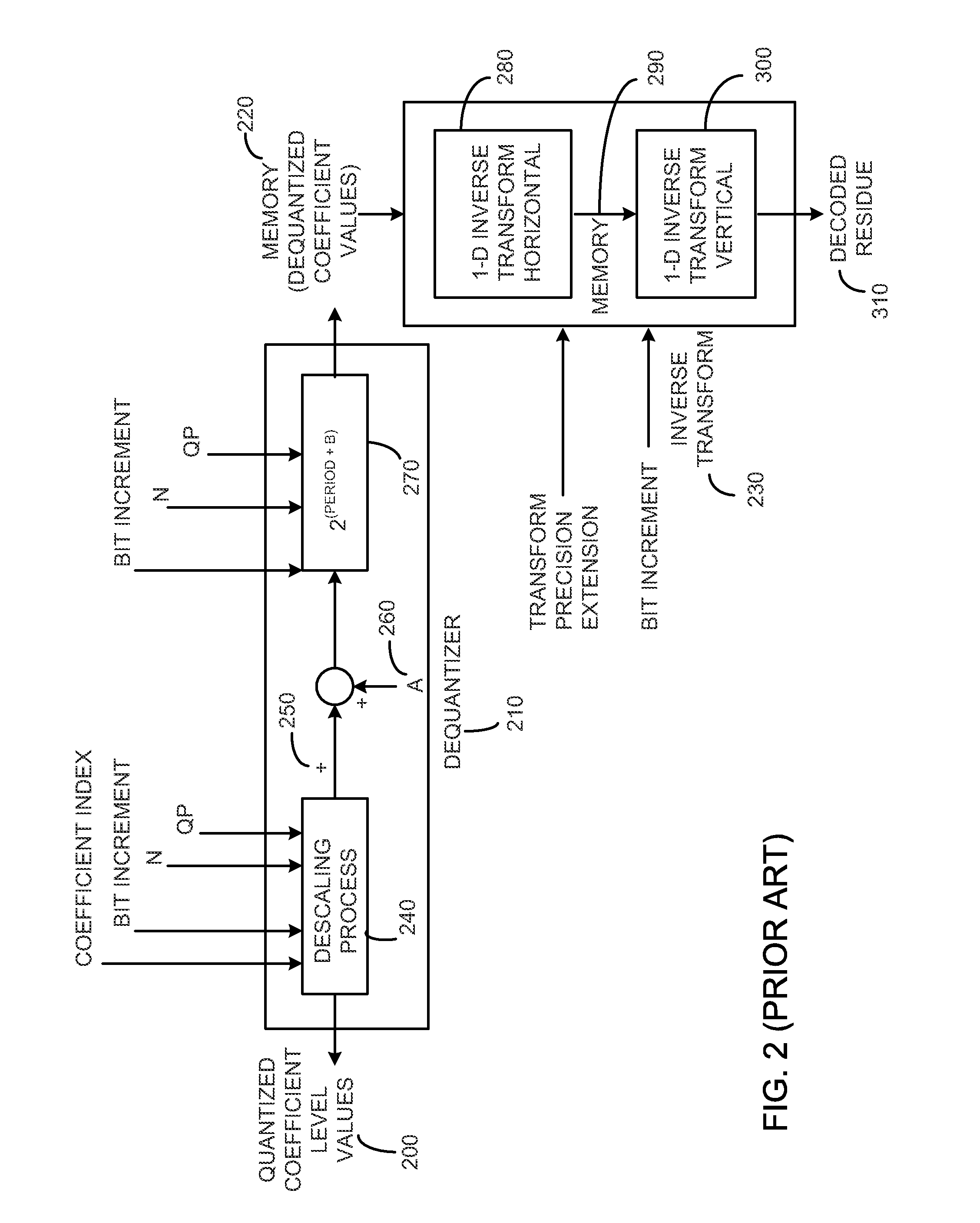Decoder with dynamic range compensation
a dynamic range compensation and encoder technology, applied in signal generators with optical-mechanical scanning, color television with bandwidth reduction, etc., can solve the problems of increasing memory bandwidth requirements, increasing desire for increased higher fidelity, and encoding and/or decoding speeds
- Summary
- Abstract
- Description
- Claims
- Application Information
AI Technical Summary
Problems solved by technology
Method used
Image
Examples
Embodiment Construction
[0016]Referring to FIG. 2 (prior art), a decoder for the de-quantization and inverse transform of the received quantized coefficient level values from the encoder for a block of the image is illustrated, in relevant part. The decoder receives the quantized coefficient level values 200 at a de-quantizer 210. The de-quantized coefficient values resulting from the de-quantizer 210 are stored in memory 220. The de-quantized coefficient values stored in memory 220 are then processed by a pair of inverse transforms 230 to determine a decoded residue 310. The pair of inverse transforms 230 map data from a transform domain to a spatial domain using a matrix multiplication operator or other suitable process. The de-quantized coefficient values 220 and the quantized coefficient level values 200 may be the same, if desired.
[0017]The de-quantizer 210 includes a descaling process 240. The descaling process 240 maps quantized coefficient level values 200 that are transmitted in the bitstream. The...
PUM
 Login to View More
Login to View More Abstract
Description
Claims
Application Information
 Login to View More
Login to View More - R&D
- Intellectual Property
- Life Sciences
- Materials
- Tech Scout
- Unparalleled Data Quality
- Higher Quality Content
- 60% Fewer Hallucinations
Browse by: Latest US Patents, China's latest patents, Technical Efficacy Thesaurus, Application Domain, Technology Topic, Popular Technical Reports.
© 2025 PatSnap. All rights reserved.Legal|Privacy policy|Modern Slavery Act Transparency Statement|Sitemap|About US| Contact US: help@patsnap.com



